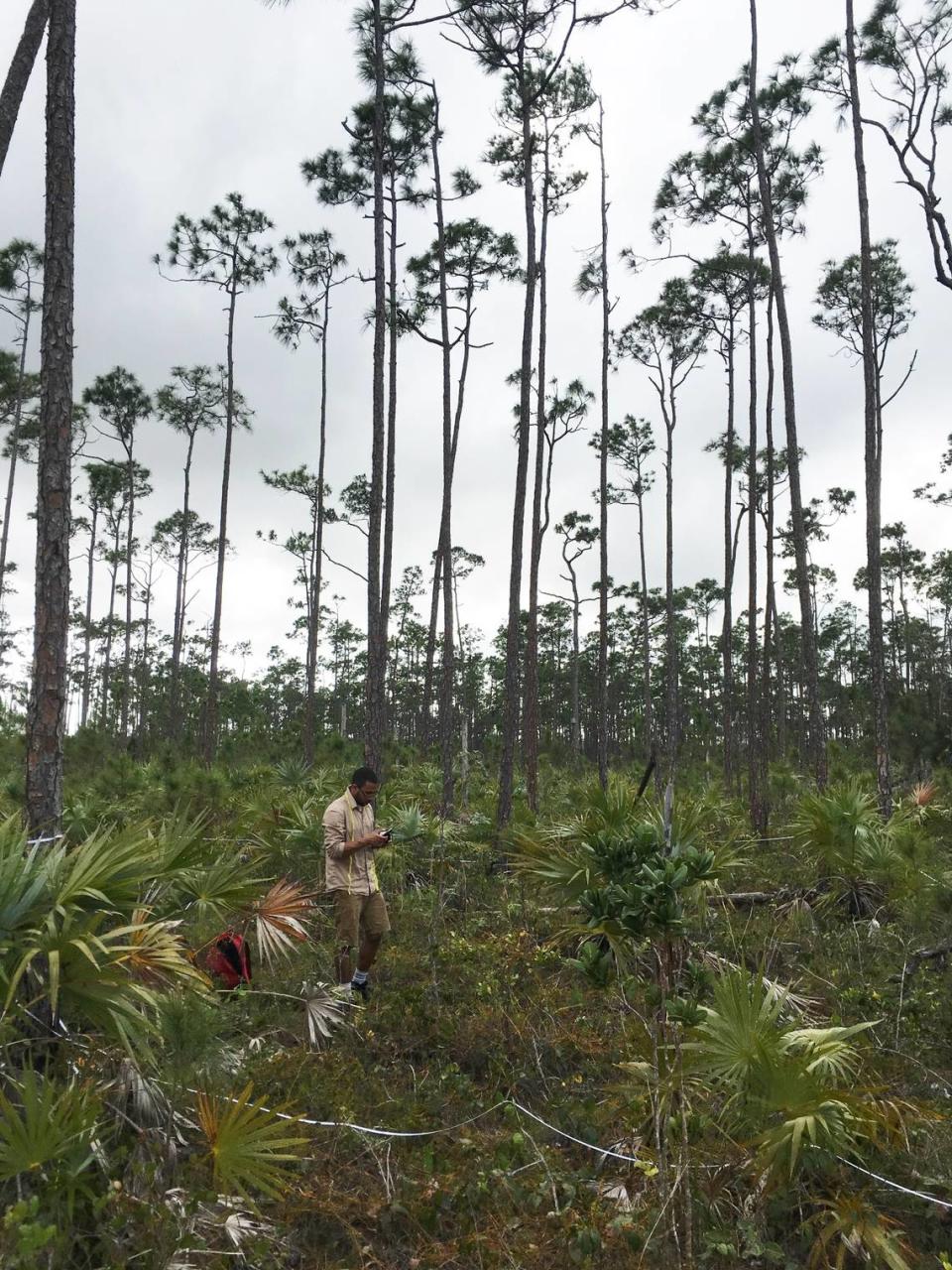This Bahamas bird was already threatened before Hurricane Dorian. Now it’s endangered
A bird native to the Bahamas that was once considered threatened is now an endangered species that may only exist on just one of the country’s islands, a new study in the United Kingdom has found.
The Bahama warbler, a little gray and yellow bird with an elongated bill that prefers to nest in the tall, native pine forest found in Grand Bahama and Abaco, appears to exist only in Abaco after Hurricane Dorian in 2019 devastated the northwest Bahamas.
The increased frequency and strength of hurricanes, along with urban development, human-induced fires and logging, have all seriously affected the bird’s natural pine forest habitat, which has helped render the little bird endangered, the research out of the University of East Anglia found.
“Although more than half the endemic birds of the Bahamas are judged in danger of global extinction, there has been little international engagement to help remedy the situation,” said Diana Bell, a professor at the UEA who supervised the team of researchers. UEA is a public research university in Norwich, England.
Researchers worked closely with the Bahamas National Trust, a nonprofit devoted to conservation of the environment, to investigate the bird’s distribution and ecology before and after Dorian, which struck the Bahamas on Sept. 1, 2019, as a Category 5 hurricane. The storm caused flooding and massive destruction on the northwest islands of Abaco and Grand Bahama, pummeling the latter for 48 long hours before finally moving away.
At least 74 people were reported killed. The storm caused $3.4 billion in damage, according to the Inter-American Development Bank.

In 2018, researchers David Pereira and Matthew Gardner, both students in UEA’s Masters in Applied Ecology and Conservation, visited the Bahamas to do fieldwork. The country was still recovering from another hurricane, Matthew, which struck in 2016. During their three-month stay the team searched for the warbler across 464 pine forest locations in Grand Bahama by playing recorded warbler songs to attract the birds and also surveyed the habitat at each location.
The team found a total of 327 warblers present in 209 of the 464 points surveyed. The bird’s presence was predicted by taller Thatch Palms and some fire disturbance, while its absence was signaled by a higher number of pines.
Following Dorian’s destruction of the pines on Grand Bahama, the team believes the bird now only exists in Abaco.
“It is possible that Grand Bahama’s entire population of Bahama Warblers was wiped out, but we know that the only other population of the species, on Abaco, has survived in the south of the island, where much of the forest remained standing,” said Pereira. “We hope that our ecological insights will help conservation management on Abaco, but both islands now need to be surveyed.”
Pereira and his co-researcher previously found the existence of the Bahama Nuthatch, a bird previously thought to be extinct.
“The Bahamas, like the rest of the Caribbean, is a biodiversity hot spot. It has such a variety of biodiversity, plants and animals,” Bell said in an interview. “The more native habitat that they lose, the more vulnerable they are to things like landslides during hurricanes.”
Bell said the findings of her team send a clear message that the Bahamas, which is dependent on tourism but increasingly susceptible to powerful storms because of climate change, needs to try to restore and protect as much as of its native habitats as possible.
“Protecting the native habitat is much better than trying to plant anything else,” she said.

 Yahoo Movies
Yahoo Movies 
